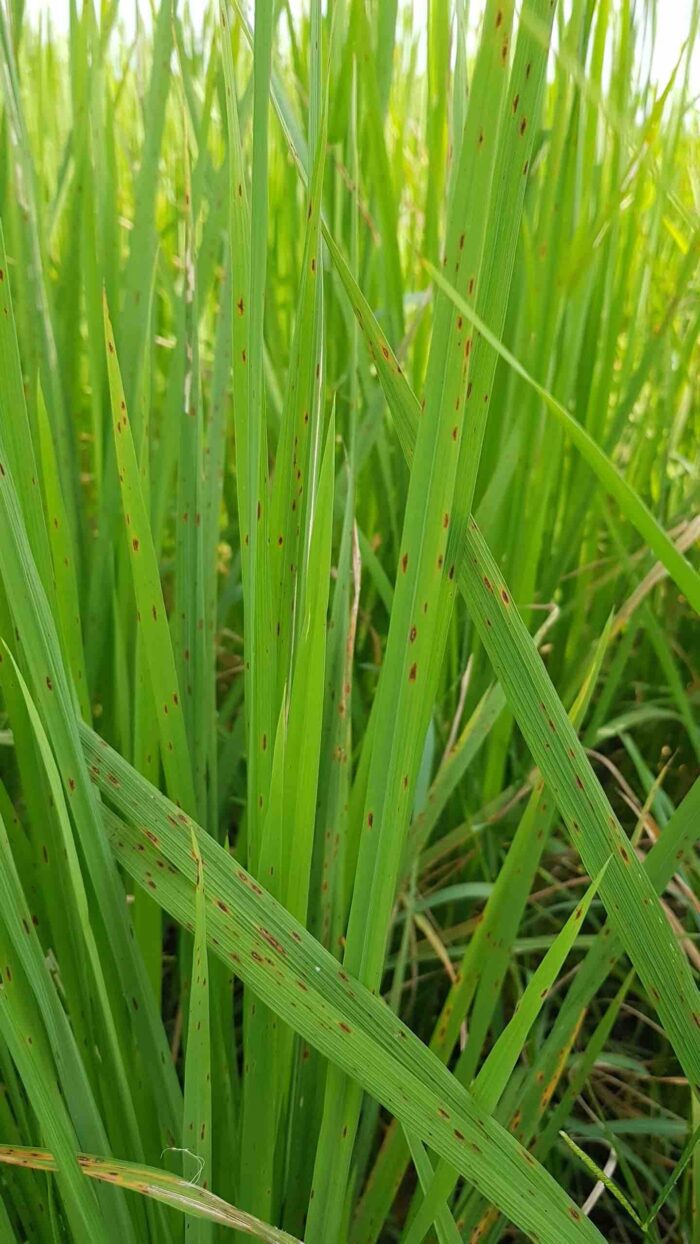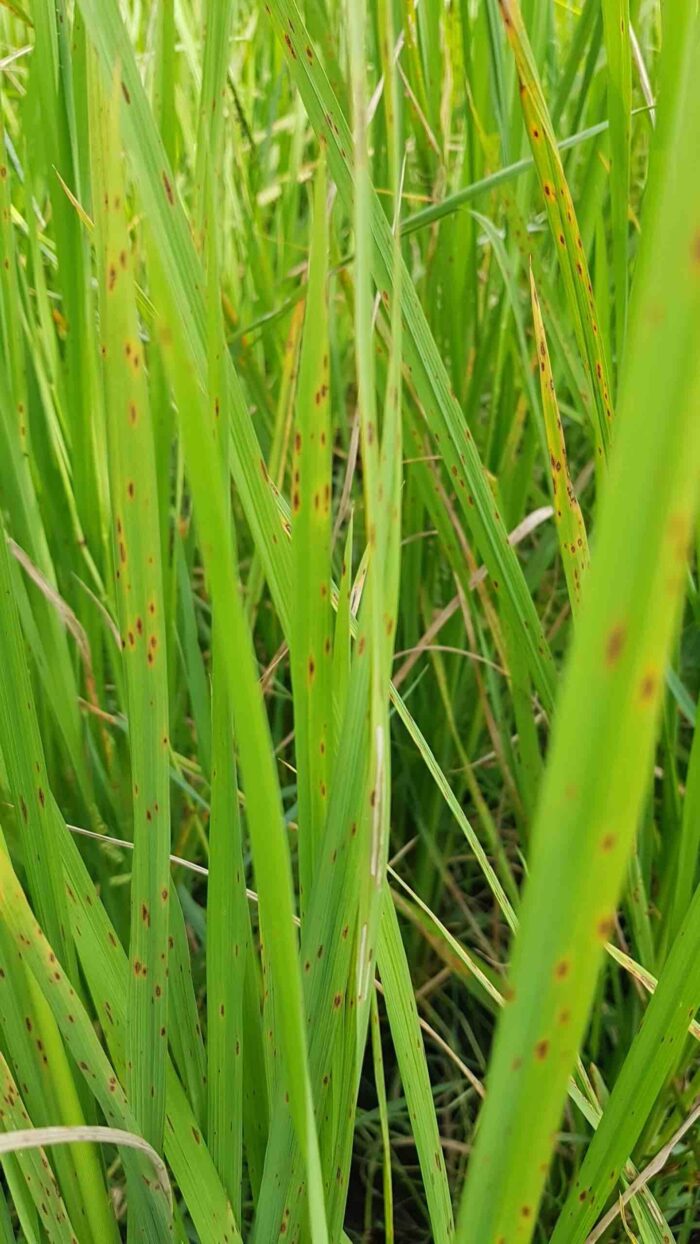Brown Leaf Spot
Rice
The symptoms on leaves are round or oval brown spots with yellow halos. The disease can cause significant economic losses if not controlled. Eventually, it will manifest on glumes and seeds that lead to yield reduction.
Brown leaf spot is a fungal disease that affects rice fields all over the world. Brown leaf spot favors high humidity, but is capable of developing in a range of temperatures. The fungi is more common in unflooded fields and where soils suffer nutrient-deficiencies. Important sources of brown leaf spot outbreaks are infected seeds in which the fungi are able to survive for several years and the air through the aid of wind.
*Use high quality disease-free seeds
*Plant genetically resistant seed varieties
*Maintain adequate space: Avoid over-dense planting in order to allow light to penetrate
*Crop rotation is recommended
*Adequate fertilization: Overuse of nitrogen fertilizers and underuse of potassium fertilizers tends to increase plants susceptibility to many diseases, such as brown leaf spot.
The sooner the better: It is easier and more cost effective to overcome infections during the initial stage. Make a routine to monitor the field regularly and search plants for the presence of brown leaf spot.
*Sanitation: Infected plant debris must be removed at the end of cultivation in order to avoid the fungus from surviving and infecting newly planted rice.
The following fungicides are still in use in one or more parts of the world: Propiconazole, iprodione, metominostrobin, azoxystrobin, and carbendazim.
*Names marked in red are considered to be highly poisonous to beneficial insects.
*Names marked in green are considered to be organic and IPM (integrated pest management) compatible.
Image Gallery


